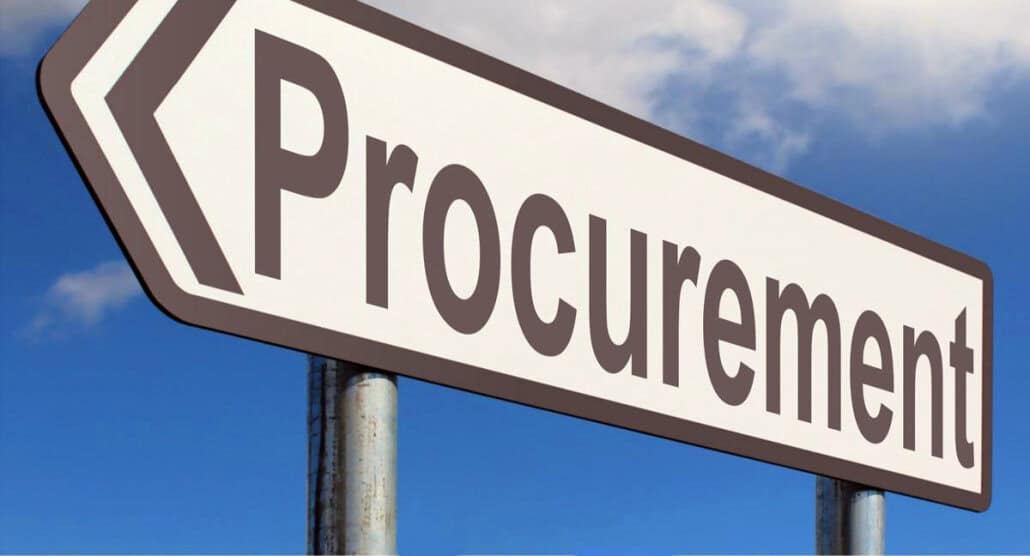The process of managing the debarment of errant suppliers by government is hardly rocket science, and should be covered swiftly if the relevant technology is embraced and incorporated. A more collaborative effort will make it more efficient.
This is the view of Prof Geo Quinot, a procurement law expert at Stellenbosch University, who has once again partnered with Corruption Watch (CW) to report on public procurement red flags in the 2023/24 financial year. The three headaches of the sector – deviations, expansions, and debarment – continued in this year, as demonstrated by CW’s latest Procurement Risk Trends report, which was released on Friday, 20 September 2024.
The report is the latest, and fourth instalment, of a series that has been produced by CW since 2020, looking at the three areas of procurement that the organisation views as being generally overlooked when addressing challenges. They also bear some risk for the sector in that deviations and expansions may be used to aid corruption, while debarment in its current state shows room for much improvement if we are going to curb public sector corruption.
Just 30 organs of state have submitted supplier names to be debarred, out of a total of 584 organs of state procuring under rules that include debarment on this list. As of June 2024, there are 183 suppliers on the restricted suppliers list, compared to 171 suppliers listed in April 2023, CW notes.
The report’s data is drawn from reports submitted to National Treasury by all procuring organs of state, and analysed by CW’s online tool, Procurement Watch, which aggregates data from the individually published reports.
Valid reasons
In Quinot’s presentation and in the report, the point is made that deviations and expansions do not necessarily translate into bad procurement practice. “There may be perfectly valid reasons for deviating from a prescribed procurement procedure or for expanding an existing contract.”
For example, if an organ of state wishes to acquire a unique piece of scientific equipment that is manufactured by only one supplier, there is no point in inviting public tenders for the supply of such equipment even though the value of the envisaged acquisition may be far above the threshold for the mandatory use of open bidding methods of procurement, reads the report.
“Using the open bidding procedure would in fact be a waste of public resources since it would not generate competition among suppliers. Instead, under such circumstances, procurement rules allow the relevant organ of state to deviate from the open bidding procedure and to contract directly with the sole supplier of the equipment.”
Both are accepted mechanisms of public procurement, says Quinot, that fall within the context of laws governing the public procurement sector. Each case of deviation or expansion should be viewed on its own merit. “It’s important to note that both mechanisms would be, under certain conditions, appropriate. But they are also, without a doubt, red flags. These are things we know from experience are often abused for corrupt purposes.”
In addition, since debarment is one of the best available mechanisms globally to deal with corruption in procurement, Quinot adds, it can also be used to measure whether our counter-corruption tools are functioning as they should.
As with deviations and contract extensions, the mere debarment of a supplier does not immediately mean that the supplier abused the procurement system. The report notes: “suppliers may also be debarred for performance failure, that is, for failing to adequately perform in terms of the procurement contract. Again, care should be taken to fully understand the rules governing debarment of suppliers and to interrogate each debarment on its own terms.”
In the current political climate, which has created an opportunity for better accountability across government, Quinot believes the opportunity to interrogate the gaps in the data and make important counter-corruption measures work in the procurement sector.
He would like to see the lesser-known and smaller departments of government in the discussions about strengthening procurement. “What I’d like to see come out of the process of making regulations [around procurement] is greater intersectoral collaboration around public procurement.
“I’d like to see the department of small business, the department responsible for women, environmental affairs. I’d like to see them at the table when we talk about where we are going with procurement, because procurement is critical for their policy mandate. We need to hear their voices.”
What the data tells us
The figures analysed are a small representation of the procurement transactions that may have happened, because they are only of state organs that have reported to the National Treasury.
In comparing the data from the 2026/17 financial year to the 2023/24, Quinot notes the spike in the number of reported deviations – as many as 3 916, with a value of just under R25-billion. He cautioned, however, that these, and the 896 recorded expansions valued at almost R38-billion in the same period, should be viewed in the context of government’s overall procurement budget, which stands currently at around one trillion rands.
Among the top 10 big spenders in contract expansions were state owned entities which, Quinot said, are regulars in this category. These include Eskom, the South African \Revenue Service, and the State Information Technology Agency, with expansion spending of R17.3-billion, R5.4-billion, and R2.8-billion respectively.
“The big story here is that the big entities, especially the SOEs, remain the dominant players in this field … that operate more in a commercial kind of context. They continue to be the big spenders in terms of value in contract expansions. This perhaps tells us about the modality of our public contracting processes and whether they are fit for purpose in a more commercial setting.”

